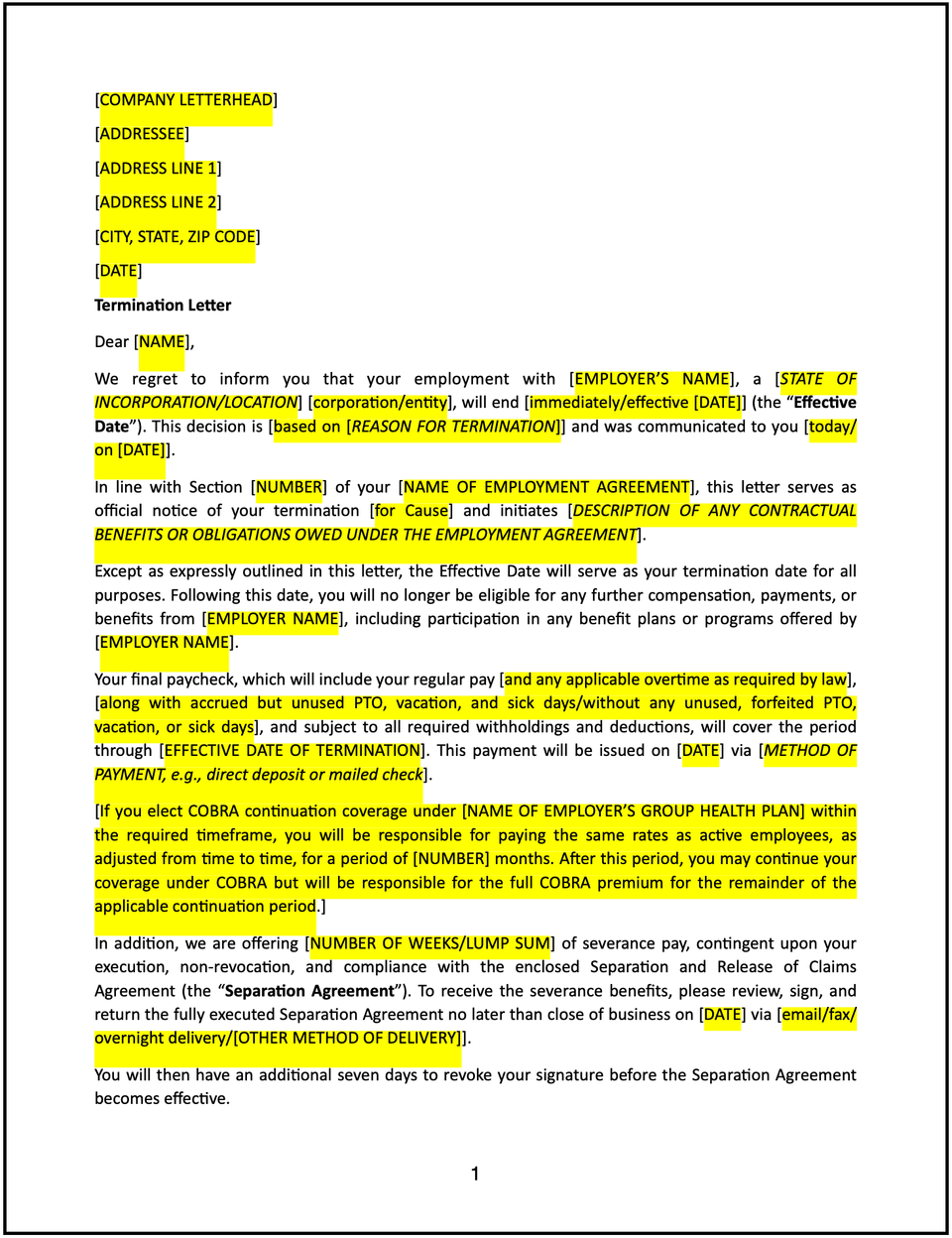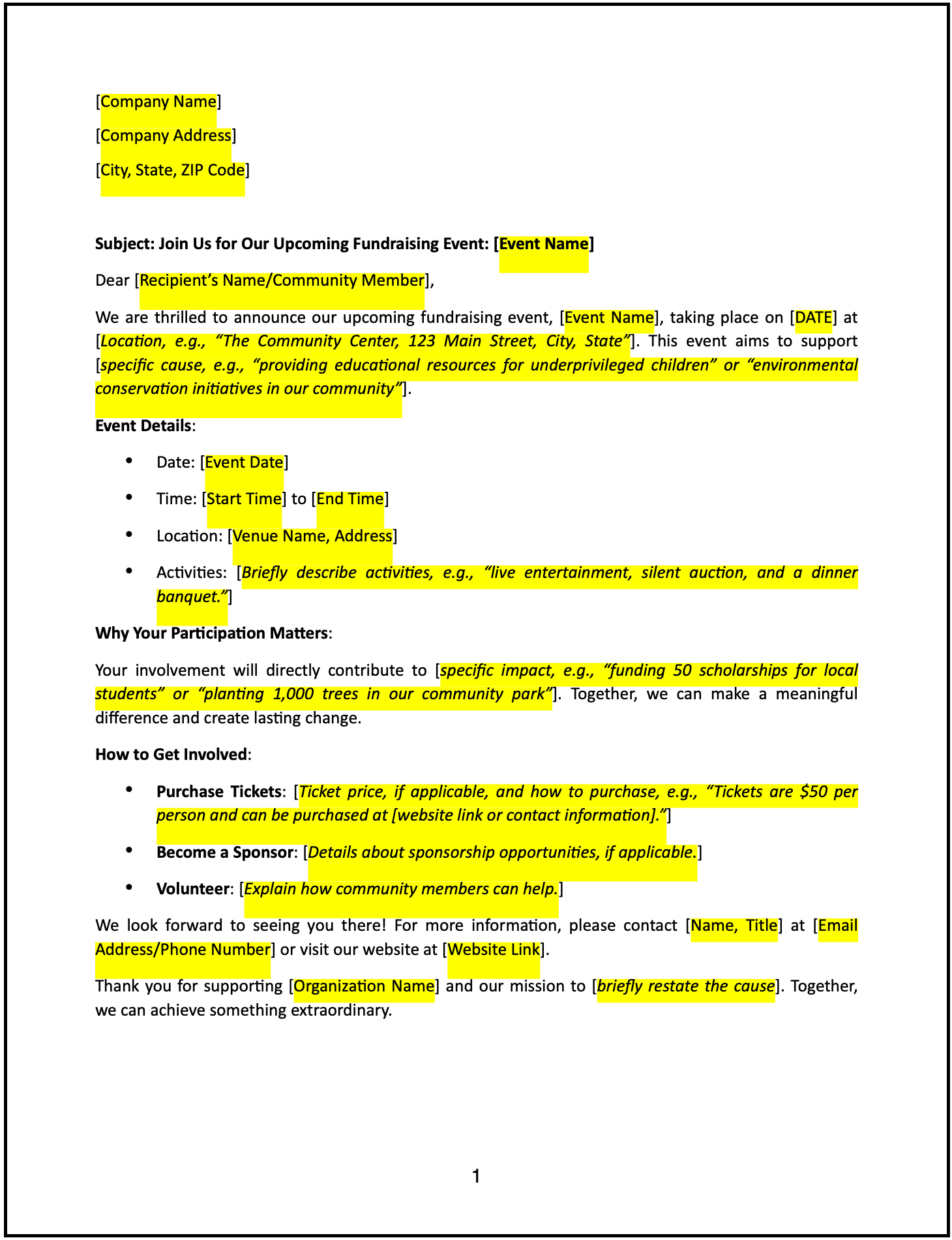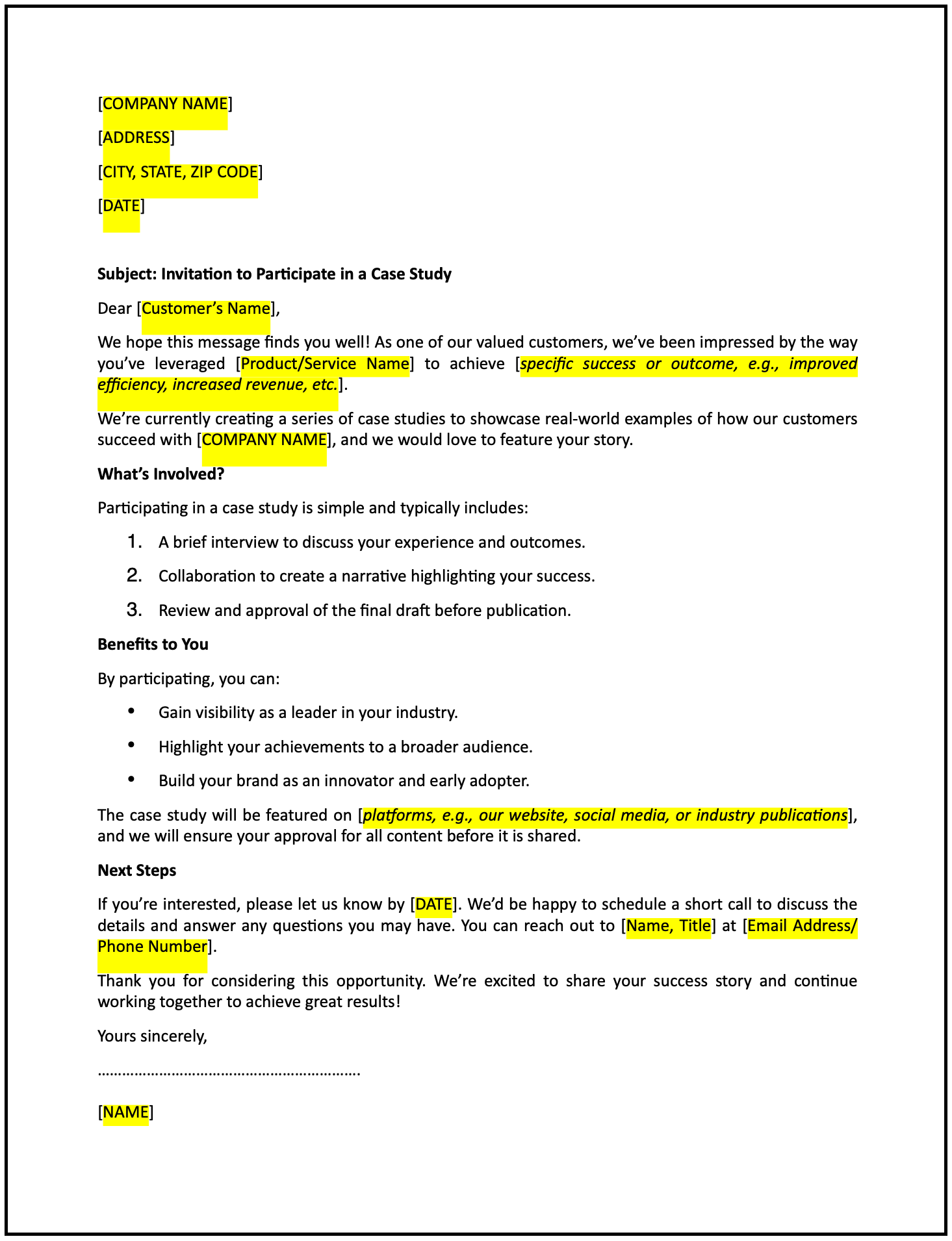Employment termination letter: Free template

Employment termination letter
An employment termination letter is a formal way to communicate the end of an employee’s contract, outlining the reasons for termination, final payments, and next steps. This letter ensures clarity, professionalism, and compliance with company policies and legal requirements.
How to use this employment termination letter
- Open with acknowledgment: Begin by referencing the employment relationship and the reason for the termination.
- State the decision: Clearly communicate that the employee’s contract is being terminated and the effective date of termination.
- Provide the reason: Briefly outline the reason for termination, whether due to performance, redundancy, or other factors.
- Reference company policies: Mention relevant policies, agreements, or performance issues that led to the decision.
- Outline next steps: Include details about final pay, benefits, unused leave payouts, return of company property, and any exit procedures.
- Offer support: If applicable, extend resources such as references or outplacement assistance.
- Maintain professionalism: Ensure the tone is respectful, clear, and focused on closure.
- Provide contact information: Include details for the employee to reach out with any questions or to discuss the termination process.
Benefits of using an employment termination letter
This letter template ensures a structured and professional way to communicate termination while fostering transparency and compliance. Here’s how it helps:
- Promotes clarity: Clearly outlining the termination decision minimizes misunderstandings and confusion.
- Reflects professionalism: A respectful and well-crafted letter reinforces the organization’s credibility.
- Ensures compliance: Citing policies or agreements ensures the decision aligns with company standards and legal requirements.
- Supports closure: Outlining next steps helps the employee understand the process and transition effectively.
- Provides documentation: Creating a formal record of the termination is valuable for HR and legal purposes.
Tips for writing an effective employment termination letter
- Be specific: Clearly state the termination decision, effective date, and reason, referencing applicable policies if necessary.
- Use professional language: Maintain a respectful and empathetic tone to foster a dignified exit.
- Highlight next steps: Provide clear instructions about final payments, benefits, and any required actions.
- Reference compliance: Mention relevant company policies or legal requirements to support the decision.
- Keep it concise: Focus on the key points without overwhelming the employee with unnecessary details.
Frequently asked questions (FAQs)
Q: What details should I include in this letter?
A: Include the termination decision, effective date, reason, final pay details, next steps, and contact information for questions.
Q: Should I personalize the letter?
A: Yes, addressing the employee directly ensures clarity and demonstrates attentiveness.
Q: Who typically sends this letter?
A: The employee’s manager, supervisor, or an HR representative usually sends this letter.
Q: How formal should this letter be?
A: The tone should be highly professional and empathetic, focusing on clarity and compliance.
Q: When should this letter be sent?
A: Send the letter promptly after the termination decision is made and all necessary documentation is prepared.
Q: Can this letter include an offer for an exit meeting?
A: Yes, offering an exit meeting allows the employee to ask questions and ensures a smooth process.
Q: Is acknowledgment from the recipient required?
A: While not mandatory, requesting acknowledgment ensures the employee understands the termination and next steps.
This article contains general legal information and does not contain legal advice. Cobrief is not a law firm or a substitute for an attorney or law firm. The law is complex and changes often. For legal advice, please ask a lawyer.


